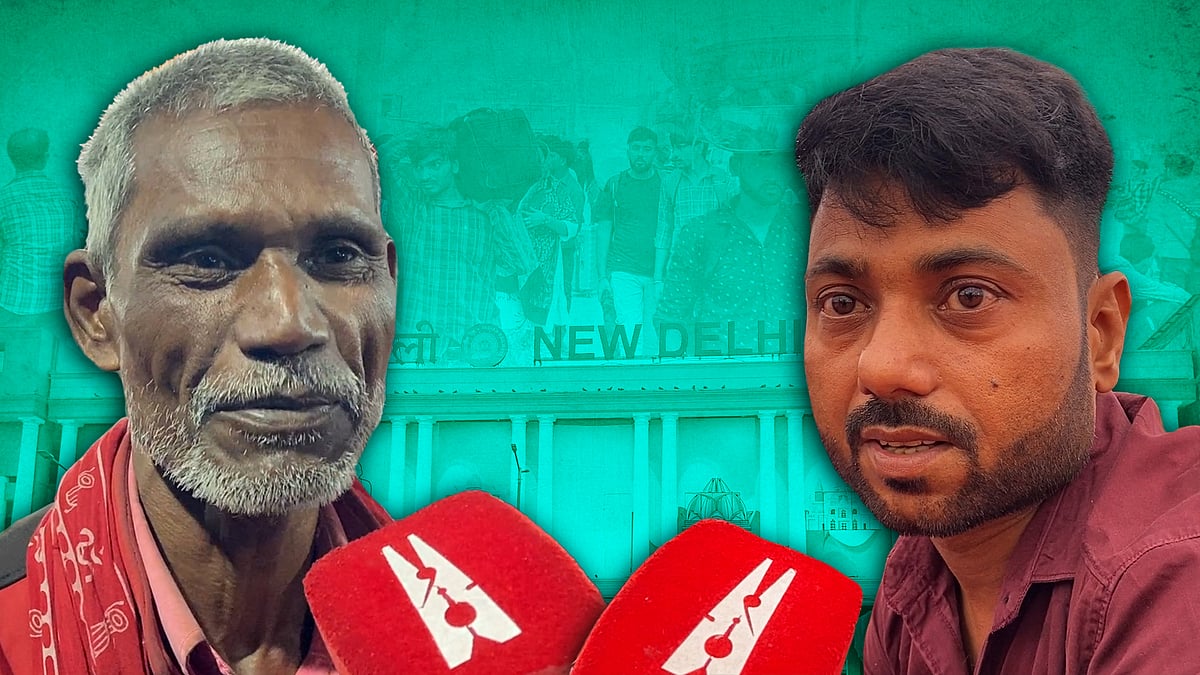In Bihar, low registration for govt scheme keeps pregnant women from accessing healthcare
At least half of the women’s applications to avail the central government’s Pradhan Mantri Matru Vandana Yojana are rejected.
Merely 3.97 lakh pregnant women in Bihar, against 15.01 lakh institutional deliveries, availed of benefits under the Pradhan Mantri Matru Vandana Yojana, or central government’s maternity benefit scheme, in 2021–22, as per data compiled by the state’s women and child development department.
At least half of the women who applied for the scheme were rejected, and only around 35-50 percent of applications qualified for it.
The PMMVY, which was inaugurated in 2017, provides financial assistance for wage loss during expectant mothers’ non-working days and is seen as especially crucial for not only ensuring women’s financial security but also countering maternal and child health issues in states with low per capita income, such as Bihar.
As a result of lack of financial aid among other factors, Bihar also sees the least number of women avail four or more antenatal care check ups – at 25.2 percent of all pregnant women for 2019-2020, as per the NFHS-5. The WHO recommends at least four antenatal care checkups.
In the first trimester, 52.9 percent pregnant women in Bihar availed antenatal check-ups during the same time frame, much lower than the national average at 70 percent. Meanwhile, institutional deliveries at public health facilities were availed by only 47.6 percent women,
And even though 89.5 percent of women with registered pregnancies received the Mother and Child Protection Card in Bihar – for tracking the health of each mother and child – only 9.3 percent of all women consumed iron folic acid for 180 days during their pregnancy.
All this means one of the worst healthcare indicators for mothers and children in the state – maternal mortality ratio at 118 per lakh live births in 2018-2020, and 47 deaths before the age of one year per 1,000 live births in 2019-2021
Why is the maternity scheme crucial?
Under the PMMVY, all pregnant women and lactating mothers receive Rs 5,000 in financial assistance through direct cash transfers to their bank accounts in two instalments – first, after the mandatory registration of the pregnant woman, and the second, after the child’s registration.
Along with the benefits under the Janani Suraksha Yojana, aimed at reducing maternal and neonatal mortality by promoting institutional delivery, a pregnant woman gets a total sum of Rs 6,000.
From the fiscal year 2022, the PMMVY covers two children if the second child is a girl. For the girl child, a sum of Rs 6,000 is allocated to the mother in a single instalment after the birth, aiming to discourage female foeticide.
On stillbirth or miscarriage, women can apply for the scheme as a fresh beneficiary in case of future pregnancy.
The cash incentive assures that pregnant women take adequate rest before and after delivery of her first child, and also improves their approach and access to healthcare. However, besides the financial assistance, there is a need to strengthen health infrastructure and processes to improve child and maternal health.
Meanwhile, a lack of women’s participation in decision-making related to reproductive issues and social determinants like gender discrimination, lesser asset holdings, poverty, less education, and cultural norms also weigh on maternal health.
Insufficient fund allocation?
The Pradhan Mantri Matru Vandana Yojana is funded by both the central and state governments. However, the scheme is often criticised for inadequate budgetary allocations, and gaps in implementation.
The fund availability under the scheme appears to be inadequate going by the number of applications received.
An analysis of fund allocation and utilisation from 2019 to 2021 suggests that the number of applications and enrolled beneficiaries were highest during the pandemic, and the instalments were being received consistently. This could be due to the reverse migration of labourers and workers to rural areas during the pandemic.
Need for efficient, transparent registration
The low rate of enrollment in the PMMVY is largely attributed to the complications in the registration process. This also contributes to a vicious cycle of lower childbirth registration and lower antenatal care check ups.
The complications in registrations include the need for the woman’s husband’s Aadhar card, lack of tech-savvy staff, and poor network connectivity in rural locations for online registration.
To counter digital illiteracy, the government has introduced physical forms, or the provision of the forms being filled by the anganwadi worker or ASHA workers. But there is also a need for proper training of workers on the ground.
The convergence of the health department, the department of women and child welfare, and the frontline workers is also required. There is also a need to fill the gaps in the selection and appointment of anganwadi and ASHA workers.
The government departments must also communicate the reasons for the rejection of applications and applicants should be given an opportunity to furnish relevant documentation. Meanwhile, the list of beneficiaries with payment failures, or those who have not claimed the second instalment must also be made public.
It is worth noting that the Janani Suraksha Yojana, which also aims to increase the number of institutional deliveries, has many more beneficiaries than the PMMVY – making a case to merge the registration process for both the schemes.
However, while about 19.98 lakh live births were reported in Bihar in 2021-22, the number of institutional deliveries stood at 15.01 lakh in the state during the same period, as per the economic survey of Bihar 2022-23.
Despite these gaps, both the PMMVY and Janani Suraksha Yojana remain crucial to the nation in addressing the problems of maternal and child healthcare, and demand improved implementation at grassroots level.
Ujala Kumari is a policy analyst at Center for Budget and Governance Accountability.
In times of misinformation, you need news you can trust. We’ve got you covered. Subscribe to Newslaundry and power our work.
General elections are around the corner, and Newslaundry and The News Minute have ambitious plans. Click here to support us.
 ‘No hope, no facilities’: Migrants board packed buses, trains to Bihar, UP for Chhath
‘No hope, no facilities’: Migrants board packed buses, trains to Bihar, UP for Chhath He’s now Bihar’s longest serving CM, but can Nitish handle future political challenges?
He’s now Bihar’s longest serving CM, but can Nitish handle future political challenges?